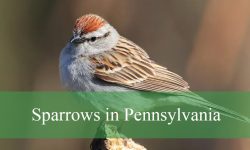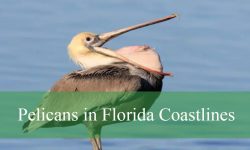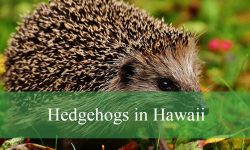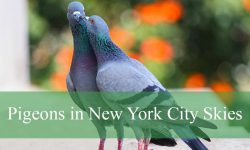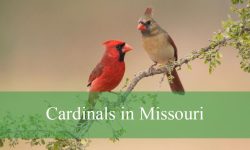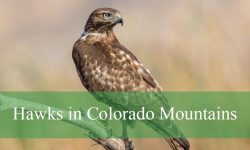Florida’s warm climate and diverse habitats make it a haven for birdlife, especially in residential areas. From colorful songbirds to curious woodpeckers, the variety of species you can spot just outside your window is truly impressive. Whether you live near the coast or inland, there’s always something flapping or chirping nearby.
Backyard Birds in Florida include year-round residents like the Northern Cardinal and Blue Jay, as well as seasonal visitors such as the American Goldfinch and Palm Warbler. With the right mix of food, water, and shelter, your backyard can become a hotspot for birdwatching throughout the year.
In this guide, you’ll discover 25 Backyard Birds in Florida with clear pictures and identification tips. Learn how to recognize them by their colors, behaviors, and calls, and find out which ones are most likely to show up at your feeder or garden shrubs.
Common Backyard Birds Found in Florida
Red-bellied Woodpecker
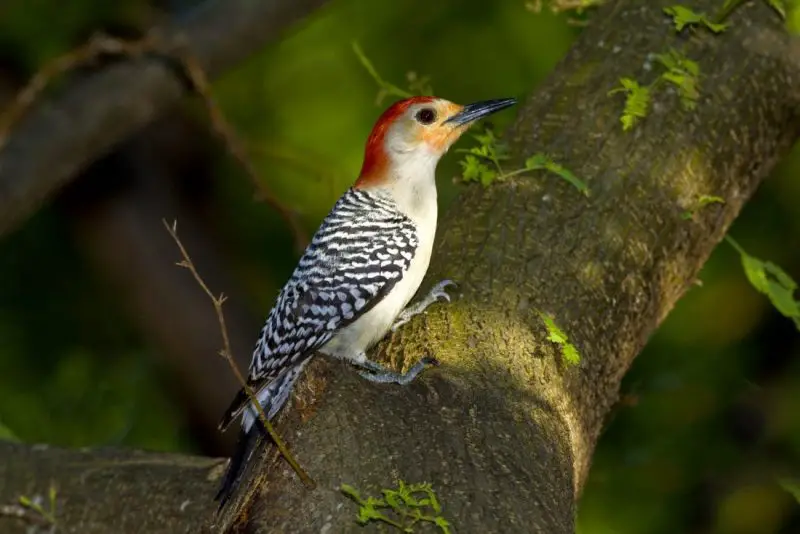
The Red-bellied Woodpecker is a striking bird with a black-and-white barred back and a bold red crown that extends from the bill to the nape in males (and just the nape in females). Despite its name, the red belly is often faint and hard to notice. This medium-sized woodpecker measures about 9–10.5 inches in length.
Red-bellied Woodpeckers are common sights at backyard feeders, especially those offering suet, peanuts, or sunflower seeds. They also forage by probing tree bark for insects and larvae or collecting fruit and nuts. Their call is a rolling “churr” that echoes through forests and suburban areas alike.
They thrive in woodlands, swamps, and residential neighborhoods with mature trees. In Florida, they are widespread across the state, including both rural and urban regions. These woodpeckers are year-round residents and often return to the same nesting cavities in tree trunks season after season.
Northern Cardinal
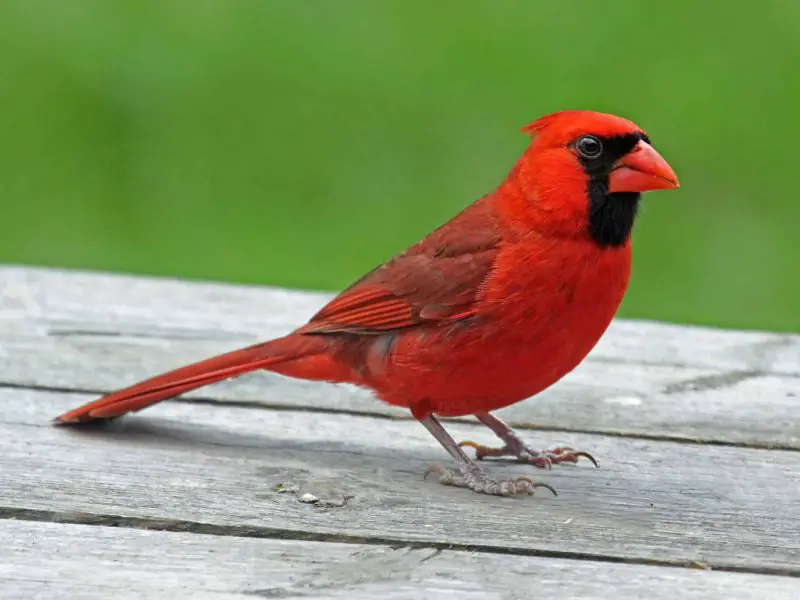
The Northern Cardinal is one of the most recognizable backyard birds in Florida. Males display vivid red plumage with a black mask around their faces, while females are a warm brown color with soft red accents on the wings and tail. Both sexes have a bright orange beak and a prominent crest on top of the head, making them easy to spot among garden shrubs and trees.
This species typically measures around 8–9 inches in length and is known for its melodious, whistling songs that echo through neighborhoods year-round. Northern Cardinals are non-migratory, so they can be seen throughout Florida in every season. Males are territorial and may even attack their reflection during breeding season.
Cardinals feed on seeds, fruits, and insects, and they are frequent visitors to bird feeders—especially those stocked with sunflower seeds. They prefer habitats with dense foliage, such as backyard hedges, wooded edges, and suburban gardens. Northern Cardinals are widespread across Florida, from the Panhandle to the southern tip of the peninsula.
Blue Jay
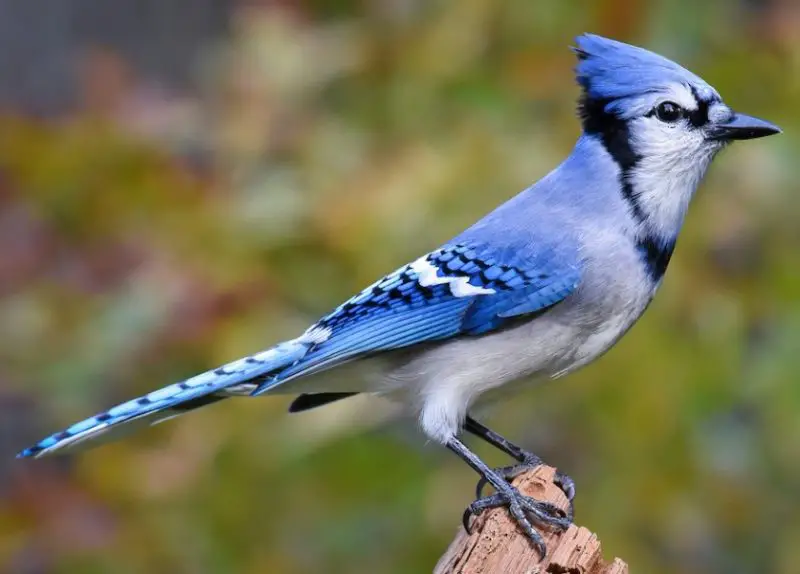
The Blue Jay is a bold and highly vocal bird, commonly found in Florida’s backyards and urban parks. Its brilliant blue plumage is accented with white underparts and black bars on the wings and tail. A black “necklace” wraps around the lower throat, and the bird sports a pointed crest atop its head that raises when agitated or excited.
Measuring about 10–12 inches long, Blue Jays are known for their intelligence and mimicry skills. They often imitate hawk calls to scare off smaller birds from feeders. These birds are social, sometimes forming loose flocks as they move through treetops, loudly calling “jay jay” as they go.
Their diet includes acorns, seeds, fruits, insects, and occasionally small vertebrates. Blue Jays are frequent visitors to feeders, particularly those offering peanuts, corn, or sunflower seeds. They nest in tall trees and adapt well to both wooded areas and suburban neighborhoods throughout Florida, especially in oak-rich habitats.
Mourning Dove
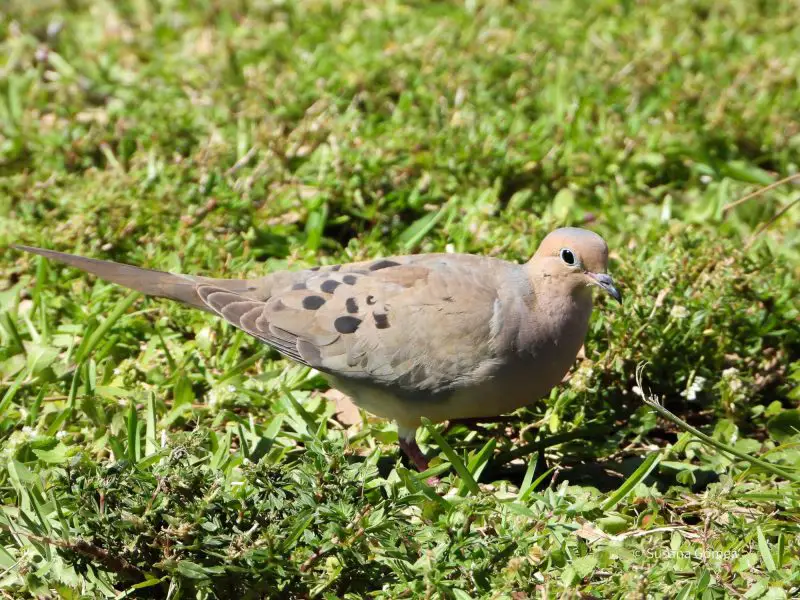
Mourning Doves are soft-colored birds with slender, streamlined bodies and long, pointed tails edged in white. They exhibit a pale grayish-tan coloration with subtle pinkish hues on the chest and black spots on the wings. Adults measure about 9–13 inches in length.
Their name comes from their gentle, sorrowful cooing calls that are often heard early in the morning and late in the evening. Mourning Doves are often seen in pairs or small groups, feeding directly on the ground in open areas. They take flight quickly with sharp wingbeats and a noticeable whistling sound.
These doves feed mostly on seeds, preferring cracked corn, millet, and sunflower seeds, which makes them regular guests at ground-level feeders or those with trays. Mourning Doves are extremely common throughout Florida and are found in urban neighborhoods, farmlands, and open woodlands, often perching on wires and rooftops.
Carolina Wren
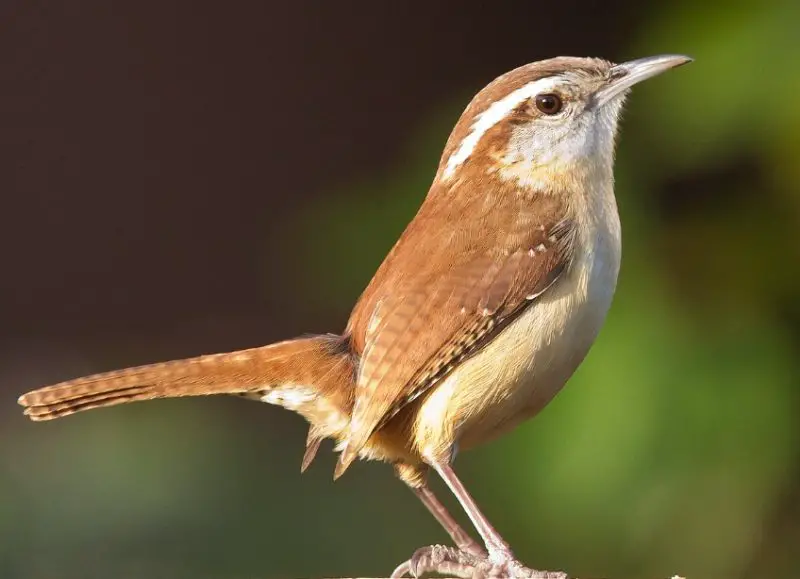
The Carolina Wren is a small but energetic bird with a warm reddish-brown back, buffy underparts, and a distinct white eyebrow stripe. Compact in size—usually around 5.5 inches long—this bird has a slightly curved bill and a habit of cocking its tail upward when perched.
Carolina Wrens are known for their remarkably loud and cheerful song that seems too powerful for such a small body. Their “teakettle-teakettle” call is a familiar sound in gardens and wooded areas across Florida. These wrens are curious and bold, often seen hopping through flowerpots, crevices, and brush piles in search of insects and spiders.
They prefer dense vegetation, understory thickets, and even residential yards with plenty of cover. In Florida, Carolina Wrens are year-round residents throughout the state and can adapt well to human presence. Though not commonly seen at seed feeders, they will come to suet or mealworms offered in sheltered spots.
Tufted Titmouse
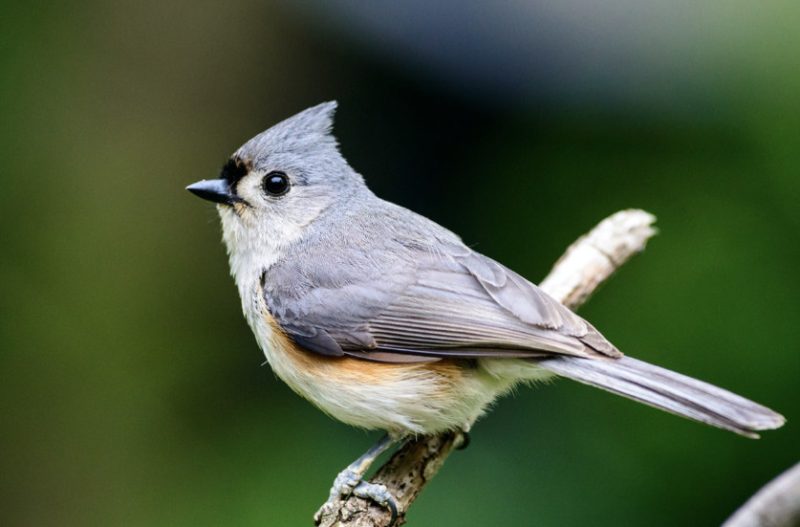
The Tufted Titmouse is a charming gray songbird easily recognized by its soft gray body, white underparts, and a distinct crest atop its head. It has large black eyes, a small black patch above the beak, and subtle rust-colored flanks. Measuring around 5.5 to 6.5 inches long, it’s a regular presence in Florida’s wooded backyards.
This bird is highly curious and tends to approach feeders boldly, often grabbing seeds and flying off to eat in nearby cover. It forms flocks in the non-breeding season, sometimes teaming up with chickadees and woodpeckers. Its call is a whistled “peter-peter-peter” that echoes through suburban woodlots and forest edges.
Tufted Titmice prefer habitats with mature deciduous trees but also adapt well to backyards with bird feeders and native plantings. In Florida, they are found year-round throughout most of the state, especially in the northern and central regions. They frequently visit feeders offering sunflower seeds, suet, and peanuts.
Northern Mockingbird
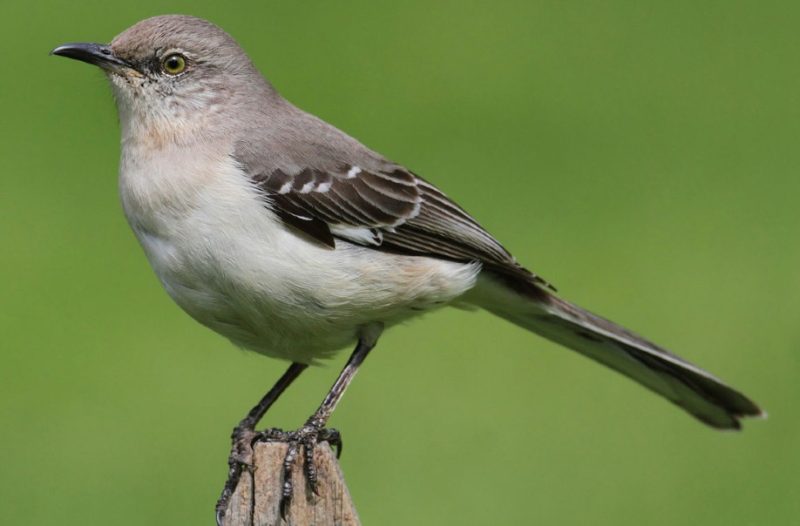
The Northern Mockingbird is Florida’s official state bird and one of the most vocal and entertaining birds you can observe. It has gray upperparts, paler underparts, and flashes of white on the wings and tail when it flies. Adults are about 9–11 inches long and have a slender body with a long tail.
Renowned for its singing ability, the Northern Mockingbird mimics the calls of other birds, insects, and even mechanical noises. It often sings from high perches both during the day and at night, especially during spring and early summer. Males are particularly territorial and may chase off intruders from yards and gardens.
These birds thrive in open areas with sparse trees and shrubs, including residential areas, parks, and roadsides. They are non-migratory and found year-round across all of Florida. Northern Mockingbirds feed on insects, berries, and fruits, and they sometimes visit feeders offering mealworms or suet.
Gray Catbird
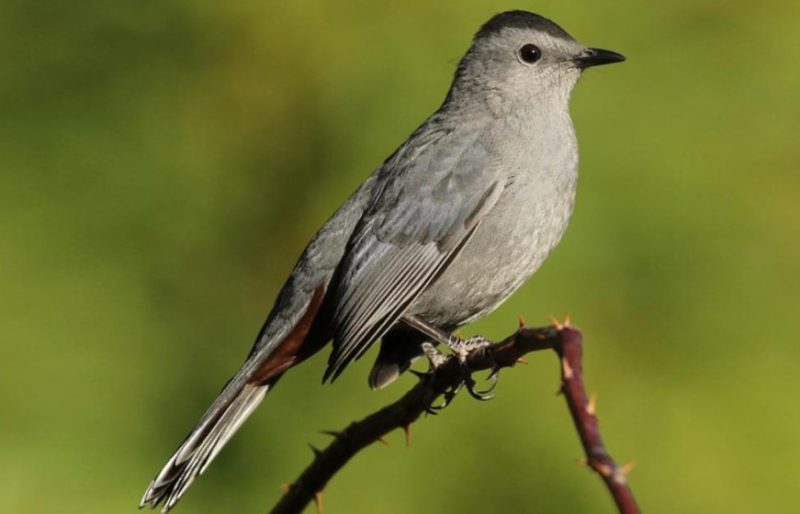
The Gray Catbird is an elegant, medium-sized bird with slate-gray plumage, a black cap, and rusty undertail coverts. Its slender build and secretive nature make it more often heard than seen. Adults measure about 8–9 inches in length and have a long, rounded tail.
Gray Catbirds are named for their distinctive “mewing” call, which resembles the sound of a cat. They are also capable mimics and often include various sounds in their songs. These birds prefer dense vegetation, especially shrubs and thickets, where they forage for insects and berries while staying partially hidden.
In Florida, Gray Catbirds are mainly winter visitors, especially in the central and southern parts of the state. Some remain year-round in the northern areas. They’re frequently seen in overgrown gardens, hedgerows, and wooded backyards and may visit feeders that offer fruits, raisins, or suet.
Palm Warbler
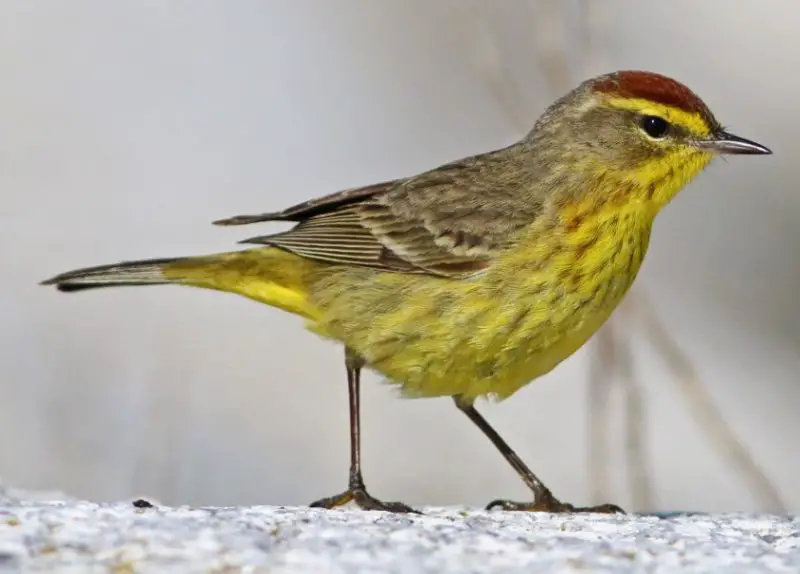
The Palm Warbler is a small, active songbird recognized by its brownish-olive upperparts, yellowish underparts, and persistent tail-bobbing behavior. A rusty cap becomes more prominent during breeding season. This species measures about 5–5.5 inches long and often forages on the ground.
Unlike many warblers, Palm Warblers spend a lot of time in open spaces, including grassy fields, parks, and lawns. In Florida, they are abundant during fall and winter migration, especially in the northern and central regions. Their soft trill and constant movement make them easy to spot in open areas.
They feed on insects and small invertebrates, occasionally picking at seeds and berries. Though not typical feeder visitors, Palm Warblers may show up near feeders that provide mealworms or suet. Their adaptability to suburban landscapes makes them a common sight in Florida from late fall through early spring.
Common Grackle
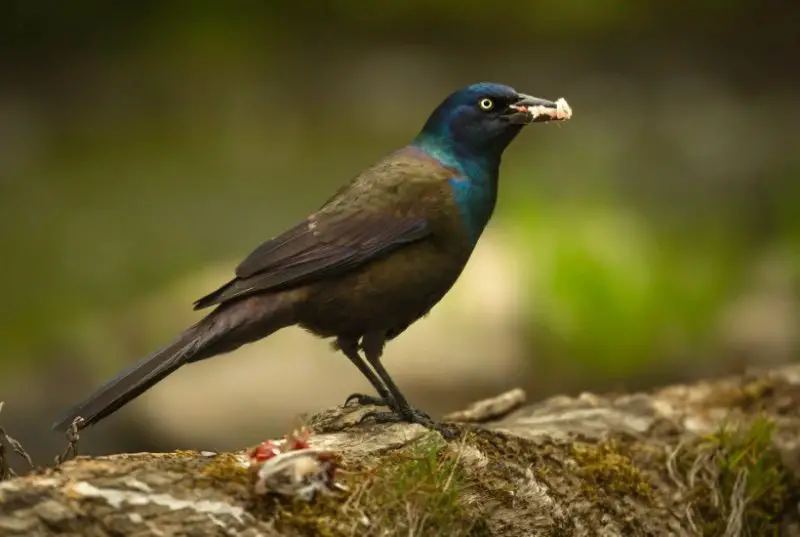
The Common Grackle is a large, glossy blackbird with an iridescent sheen of purples and blues, especially on the head and neck. Its bright yellow eyes and long, keel-shaped tail give it a distinctive, slightly menacing appearance. Adults are about 11–13 inches long.
Grackles are highly social and often travel in noisy flocks, especially outside the breeding season. They have a wide range of vocalizations, including whistles, clicks, and harsh croaks. These birds can be seen strutting across lawns, perching in trees, or crowding feeders with their bold presence.
In Florida, Common Grackles are widespread throughout the state all year long. They inhabit urban neighborhoods, wetlands, agricultural fields, and coastal areas. Their diet includes seeds, grains, insects, and even small animals. They readily visit feeders stocked with corn, sunflower seeds, or suet, often dominating the feeding area in flocks.
Boat-tailed Grackle
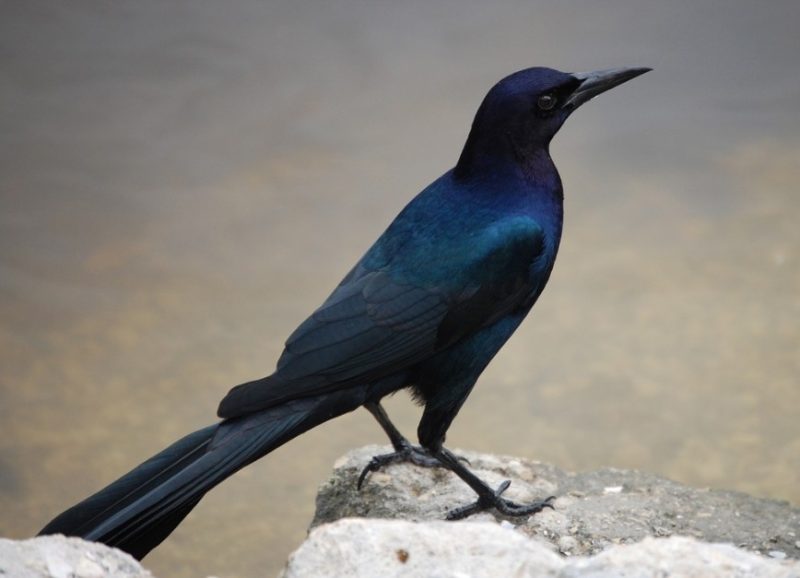
The Boat-tailed Grackle is a large, striking blackbird commonly found along Florida’s coastal regions and wetlands. Males are glossy black with a strong iridescent blue or purple sheen, especially in sunlight, while females are brown and more slender in appearance. One of their most notable features is the long, keel-shaped tail that often appears boat-like when fanned.
These birds measure around 15–17 inches in length, making them one of the largest grackles in the U.S. Boat-tailed Grackles are highly vocal, producing a mix of whistles, rattles, and harsh calls. They gather in large flocks and are often seen walking boldly through parking lots, coastal boardwalks, or marsh grasses near the shore.
They feed on a wide variety of items, including insects, grains, crustaceans, small vertebrates, and human food scraps. In Florida, they are year-round residents, especially common along the Atlantic and Gulf coasts. They frequently forage in open, wet habitats and may visit feeders close to coastal neighborhoods.
American Goldfinch
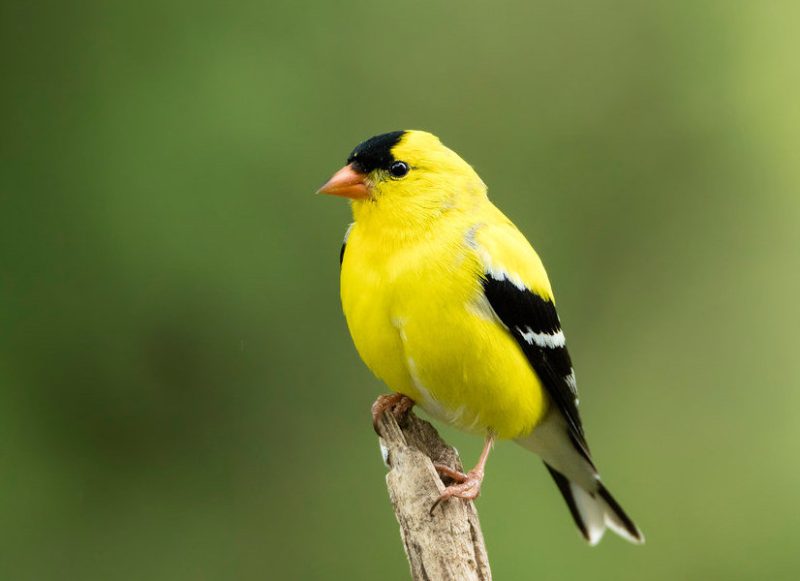
The American Goldfinch is a small, colorful songbird that adds a burst of brightness to Florida’s backyards, especially in the winter months. Males are vivid yellow with black wings and caps during breeding season, while females are more muted yellow-brown. In winter, both sexes become duller but still retain a delicate beauty.
Measuring about 4.5–5 inches long, Goldfinches are agile, social, and have a bouncy flight pattern often accompanied by their sweet, warbling calls. They are drawn to feeders, particularly those offering nyjer (thistle) or black-oil sunflower seeds, and they prefer to eat while perched rather than clinging.
In Florida, American Goldfinches are mainly present from late fall through early spring as they migrate south for the winter. They frequent weedy fields, open backyards, and suburban gardens with seed-bearing plants and feeders. They’re a favorite among birders for their cheerful appearance and gentle behavior.
Eastern Bluebird
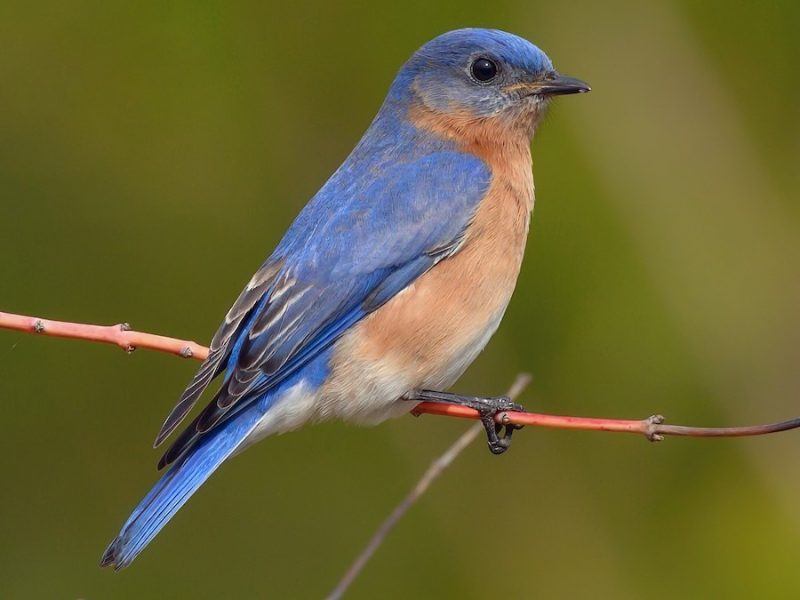
Eastern Bluebirds are beloved backyard visitors with their brilliant blue upperparts and warm rusty-orange chests. Females have similar coloring but appear more subdued. These birds are around 6.5–7 inches long and are known for their gentle expressions and sweet warbling songs.
They prefer open habitats such as pastures, golf courses, and spacious backyards, especially where nest boxes are provided. In Florida, Eastern Bluebirds are year-round residents, particularly in the northern and central parts of the state, and less common in the far south. During nesting season, they can often be seen bringing insects to their young in mounted boxes.
Eastern Bluebirds feed primarily on insects and small fruits, and they occasionally visit feeders that offer mealworms. They often perch on wires or low branches, scanning for food on the ground, and are known for their calm presence and soft, musical calls that add a peaceful quality to any landscape.
House Finch
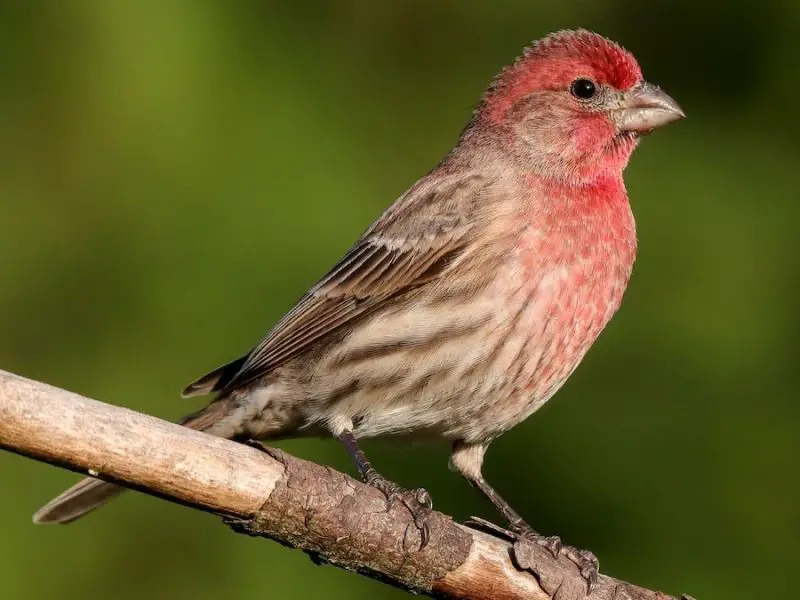
The House Finch is a familiar sight in urban and suburban areas of Florida. Males have rosy-red foreheads, throats, and chests, while females are streaky brown and lack the red coloring. Both have conical beaks ideal for seed eating and measure about 5–6 inches in length.
These finches are social and often arrive at feeders in small flocks. They have a pleasant, warbling song and soft “cheep” calls that they use frequently while foraging or perched in trees. House Finches adapt easily to human environments and are often found nesting in building ledges, hanging plants, or outdoor light fixtures.
Though not native to the eastern U.S., they are now well established in Florida and can be seen year-round, particularly in neighborhoods, parks, and city gardens. They feed on seeds, fruits, and buds, with sunflower seeds being a particular favorite at backyard feeders.
Downy Woodpecker
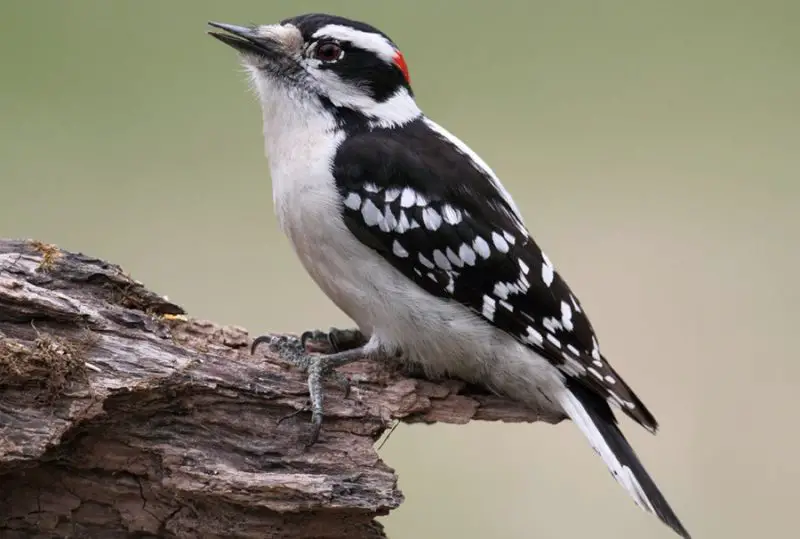
The Downy Woodpecker is the smallest woodpecker in North America and a frequent, friendly visitor to Florida bird feeders. It has a black-and-white pattern on its back, white underparts, and a small red patch on the back of the head in males. Adults measure about 5.5–6.5 inches long, making them compact and nimble.
Downy Woodpeckers are known for their acrobatic foraging style, clinging to tree trunks and feeder poles as they search for insects, larvae, and suet. They make short, sharp “pik” calls and can often be heard drumming softly on branches. Their gentle nature makes them favorites among backyard birdwatchers.
They reside year-round in Florida, most commonly in northern and central regions but can be found in wooded suburban areas throughout the state. Downy Woodpeckers are particularly attracted to suet feeders, but they’ll also take peanuts and sunflower seeds when available, especially in the cooler months.
White-eyed Vireo
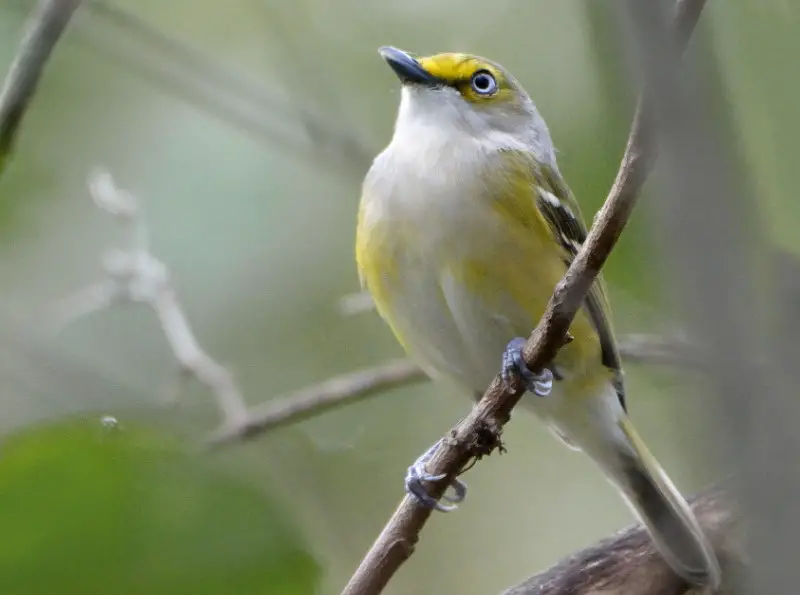
The White-eyed Vireo is a small, energetic songbird recognized by its pale yellow sides, olive-green back, and striking white eyes outlined by faint yellow spectacles. Measuring about 4.5–5 inches in length, it can be challenging to spot due to its secretive behavior, but its bright eyes and twitchy movements give it away.
This bird is known for its complex and rapid song, which includes a mix of whistles, chirps, and scolds. White-eyed Vireos tend to stay low in dense shrubs, thickets, and overgrown backyard corners, where they constantly flit through foliage in search of caterpillars, spiders, and other insects.
In Florida, they are common year-round residents in the central and southern parts of the state and are more migratory in the north. They thrive in habitats with dense vegetation and are more often heard than seen, making their distinctive vocalizations the best clue to their presence.
Ruby-throated Hummingbird
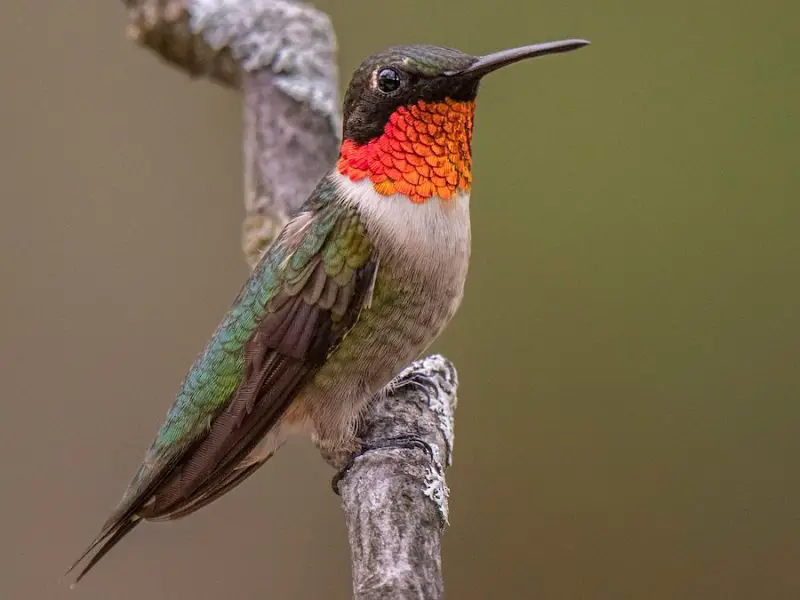
The Ruby-throated Hummingbird is Florida’s most common hummingbird species, admired for its dazzling aerial maneuvers and iridescent plumage. Males boast a brilliant ruby-red throat patch, while females lack the red coloring and have more muted green backs and white underparts. These birds measure only 3–3.5 inches in length.
They are frequent visitors to backyard gardens rich in nectar-producing flowers such as salvia, trumpet vine, and honeysuckle. Ruby-throated Hummingbirds also visit sugar-water feeders and often defend them fiercely. Their wings beat over 50 times per second, allowing them to hover and even fly backward.
In Florida, they are most commonly seen during spring and fall migration, although some individuals remain year-round in the southern part of the state. They prefer wooded edges, gardens, and suburban yards, where colorful blooms attract their attention. Their soft chattering and buzzing wings are often the first sign of their presence.
Eastern Phoebe
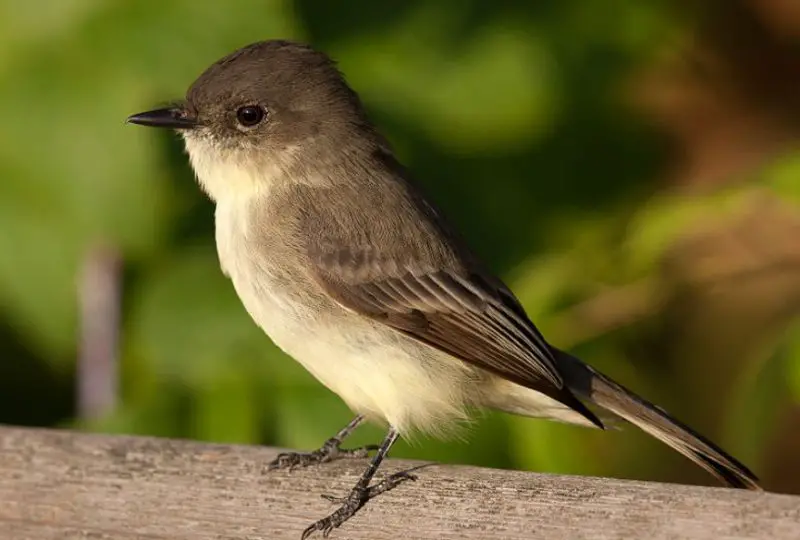
The Eastern Phoebe is a medium-sized flycatcher with a plain appearance—grayish-brown above, lighter below, and lacking bold markings—but it’s known for its tail-wagging behavior and soft “fee-bee” call. Adults measure about 6–7 inches long and are often seen perched quietly near human structures.
Eastern Phoebes are insectivores and often catch flying insects mid-air, making short, fluttering sallies from low perches like fence posts or roof edges. They also eat berries and small fruits when insects are scarce. Their call is a simple but distinctive part of Florida’s spring and fall soundscape.
In Florida, Eastern Phoebes are primarily winter residents in the southern half of the state but can be seen breeding in the northern regions. They often build their nests on ledges, porch beams, and under eaves, using mud and moss. Their tolerance of people makes them regular guests near homes, barns, and sheds.
Great Crested Flycatcher
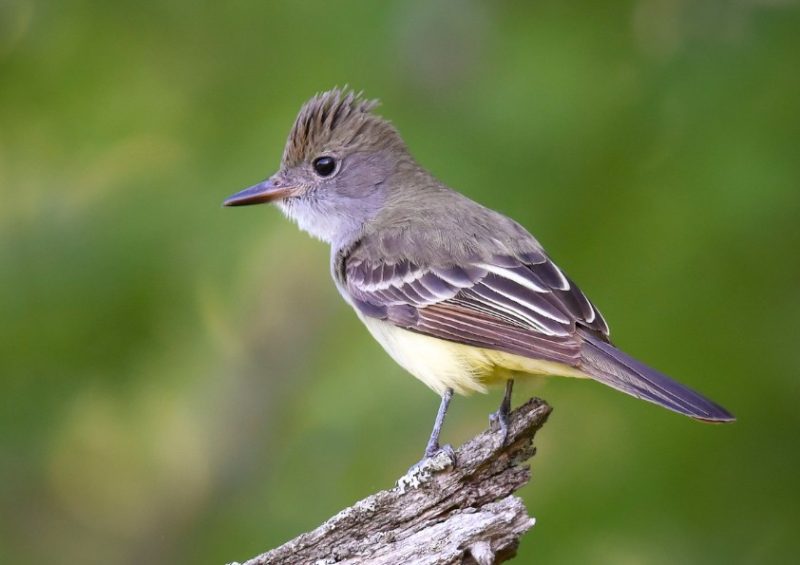
The Great Crested Flycatcher is a bold and colorful member of the flycatcher family, distinguished by its lemon-yellow belly, rusty-edged wings and tail, and a subtle gray crest on its head. Adults are about 8–9 inches long and often remain high in the canopy, making them easier to hear than see.
They are highly vocal birds with a distinctive, loud “wheep” call that rings through forests and wooded neighborhoods. Great Crested Flycatchers forage by swooping from high branches to catch flying insects or by picking prey off foliage mid-flight. They also eat berries and occasionally use shed snakeskin to line their nests.
In Florida, these birds are summer residents and breeders throughout the state. They prefer open woodlands, tree-filled backyards, and edge habitats. Nesting typically occurs in tree cavities or nest boxes placed in tall trees, and they are more often noticed by their strong calls echoing through the treetops.
Brown Thrasher
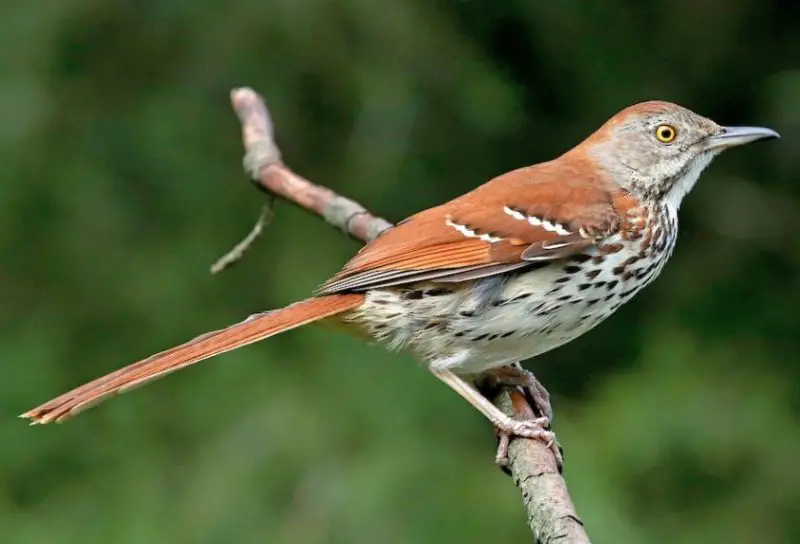
The Brown Thrasher is a medium-sized, richly colored bird with rufous-brown upperparts and boldly streaked underparts. Its long, curved bill and bright yellow eyes add to its intense appearance. Adults measure around 9–11 inches long and often flick their tail while foraging on the ground.
Known for its incredible vocal abilities, the Brown Thrasher can sing over 1,000 different song phrases, often repeating each note twice. Its melodies are delivered from hidden perches in dense shrubs or low trees. Despite its vocal nature, the Brown Thrasher is shy and prefers staying within thick vegetation.
In Florida, this bird is a year-round resident, found in brushy fields, forest edges, and overgrown backyards statewide. It feeds on insects, fruits, seeds, and sometimes small reptiles. While it rarely visits feeders, you might attract it with dense plantings, mulch beds, and berry-producing shrubs in your yard.
Red-shouldered Hawk
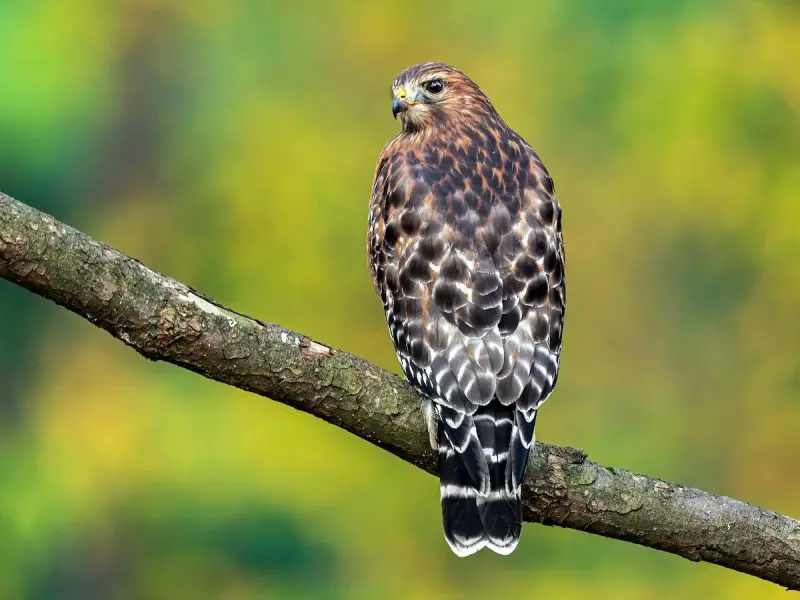
The Red-shouldered Hawk is a medium-sized raptor often seen soaring over suburban neighborhoods, wooded parks, and even golf courses throughout Florida. It has rich reddish-orange barring on the chest, black-and-white checkered wings, and distinctive rufous “shoulders” visible in flight. Adults measure about 17–24 inches long with a wingspan up to 42 inches.
Despite its size, this hawk is a common presence in residential areas where tall trees and nearby open spaces support its hunting habits. It preys on small mammals, reptiles, amphibians, and large insects, often scanning from perches or gliding silently through the canopy. Its piercing “kee-ah” call is a familiar sound in many Florida neighborhoods.
Red-shouldered Hawks are year-round residents across the entire state. They prefer mixed woodlands near water, but their adaptability allows them to thrive in urban environments. Nesting occurs high in tall trees, and pairs return to the same territory each season, often remaining close to human activity.
Eastern Towhee
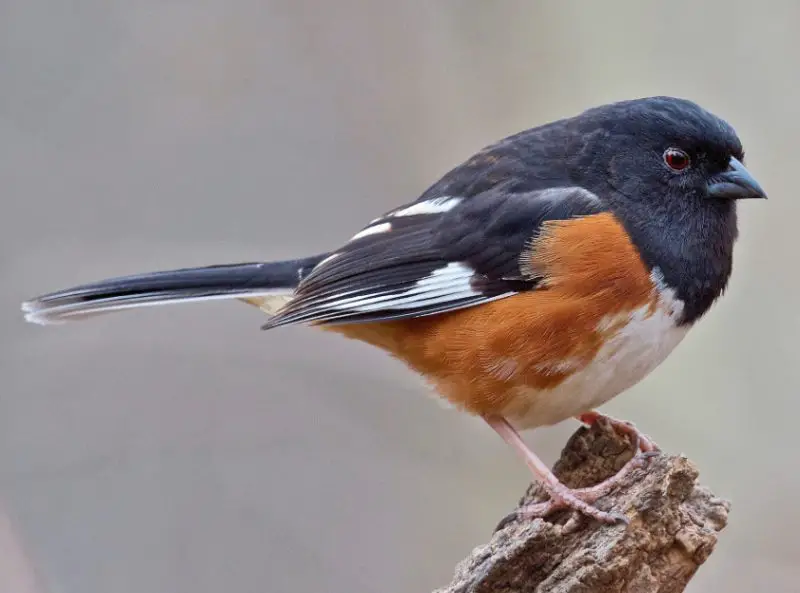
The Eastern Towhee is a striking bird with bold black, white, and rusty-orange coloring. Males are jet black on the upper parts with reddish flanks and white bellies, while females are similar but with brown replacing the black. Both sexes have red eyes and are about 7–9 inches long.
Eastern Towhees are ground foragers, frequently scratching at leaves to uncover insects and seeds. They are often heard before they are seen, delivering a sharp “chewink” call or their rising “drink-your-tea” song from within dense thickets. Their elusive nature means they spend much of their time hidden in undergrowth.
In Florida, they are found year-round across most of the state, particularly in shrubby woodlands, overgrown gardens, and backyard hedges. Providing native plants and leaf litter in your yard can encourage their presence. Though they rarely visit feeders, they may appear near the ground if seeds are scattered.
Black-and-white Warbler
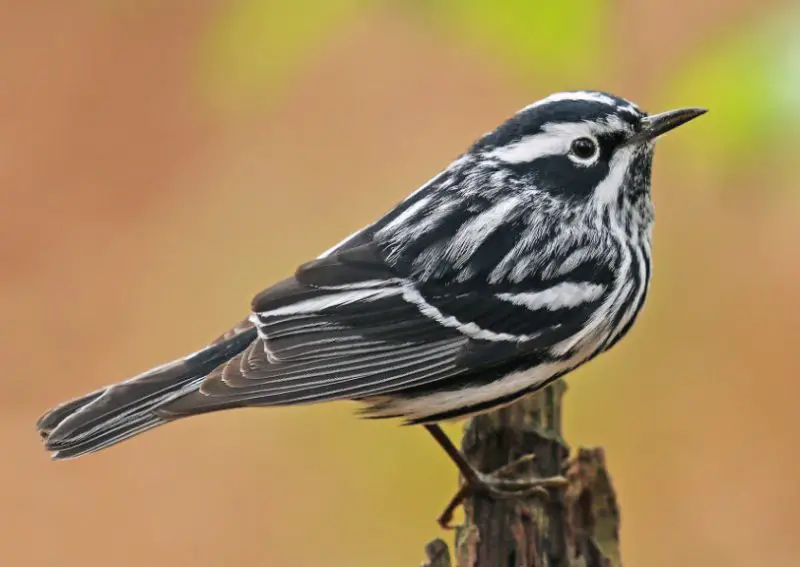
The Black-and-white Warbler is a small, agile songbird with a bold zebra-striped pattern of black and white. Its distinctive plumage, thin, slightly curved bill, and tree-creeping behavior make it unique among warblers. Adults are about 4.5–5.5 inches long.
Unlike most warblers, this species forages like a nuthatch, moving along tree trunks and branches in search of insects hiding in bark. Its thin, high-pitched “wee-see” call is often heard during migration or in wooded areas. Despite its active nature, its bold stripes make it relatively easy to spot.
In Florida, Black-and-white Warblers are commonly seen during spring and fall migration, and some overwinter in southern parts of the state. They prefer mature forests, parks, and shaded backyards with large trees. While not typical feeder birds, they may visit suet or insect-rich areas.
Northern Mockingbird

The Northern Mockingbird is a familiar and confident backyard bird known for its ability to mimic a wide variety of sounds. It is medium-sized, with gray upperparts, paler underparts, and bold white wing patches visible in flight. Measuring 9–11 inches long, it has a long tail that it often flicks dramatically.
This bird is one of Florida’s most vocal species, often singing throughout the day—and even at night—especially during the breeding season. It imitates other birds, animals, and mechanical noises, sometimes stringing together long, complex medleys from a treetop perch or rooftop.
As Florida’s state bird, the Northern Mockingbird is found across the entire state year-round. It thrives in open areas with sparse trees and shrubs, such as yards, parks, and gardens. Though territorial, it may nest in shrubs near homes and often visits feeders offering fruit, suet, or mealworms.
Common Yellowthroat
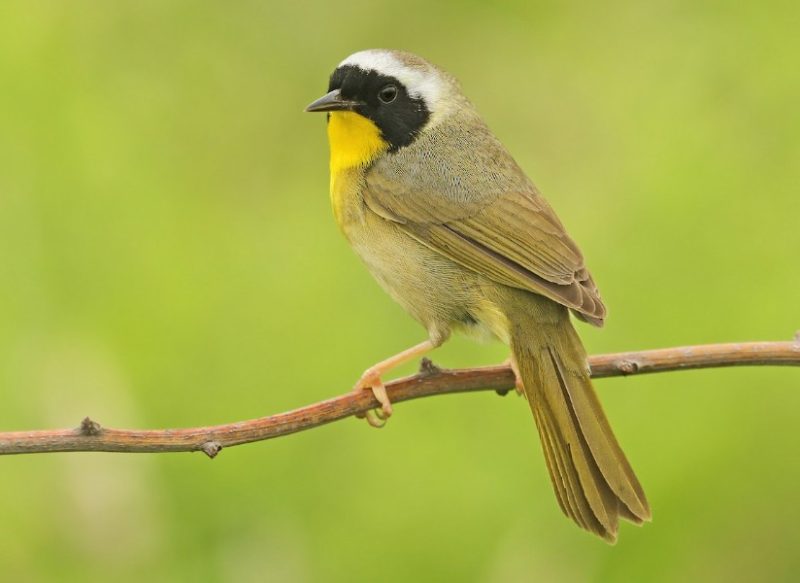
The Common Yellowthroat is a small, lively warbler known for its black facial mask bordered by a yellow throat and olive back. Females lack the dark mask but share the warm yellow coloration. Adults are about 4.5–5 inches long and move with quick, jerky motions.
These birds prefer dense, low vegetation and are often seen flitting through reeds, grasses, and brushy areas near wetlands or overgrown gardens. Their signature song is a cheerful “witchety-witchety-witchety,” which males often sing from concealed perches during the breeding season.
In Florida, Common Yellowthroats are present year-round, especially in marshy or grassy habitats. They are most abundant during migration and winter but breed in the northern and central parts of the state. While they don’t typically visit feeders, maintaining thick, native plant cover can attract them to your backyard.
FAQ About Backyard Birds in Florida
What are the most common backyard birds in Florida?
Some of the most common backyard birds in Florida include the Northern Cardinal, Blue Jay, Mourning Dove, Northern Mockingbird, and Tufted Titmouse. These birds are frequently seen at feeders and in residential neighborhoods across the state.
When is the best time to see backyard birds in Florida?
Backyard birds can be seen year-round in Florida, but bird activity often increases during spring and fall migration seasons. Many species also become more vocal and visible during the breeding months from March to June.
What type of bird feeders work best in Florida?
Tube feeders, platform feeders, and suet cages are all popular in Florida. To attract a wide range of species, it’s helpful to offer a mix of sunflower seeds, peanuts, suet, nyjer (thistle), and mealworms.
What should I feed backyard birds in Florida?
Sunflower seeds are favored by cardinals, titmice, and chickadees. Nyjer seed attracts finches, while suet is popular with woodpeckers and wrens. Mealworms and fruit can bring in bluebirds, mockingbirds, and warblers.
Are hummingbirds common in Florida backyards?
Yes, especially the Ruby-throated Hummingbird, which is the most common species in Florida. They are most active in spring and fall but can be seen year-round in southern Florida. Providing nectar-rich flowers and sugar-water feeders can attract them.
How can I attract more birds to my Florida yard?
Plant native shrubs, trees, and flowers that provide natural food sources such as berries, nectar, and seeds. Offer a variety of feeders, keep them clean, supply fresh water, and avoid using pesticides that harm insects and birds.
What backyard birds in Florida sing the most?
Northern Mockingbirds, Carolina Wrens, Eastern Towhees, and Northern Cardinals are among the most vocal backyard birds in Florida. Mockingbirds, in particular, are famous for mimicking other bird calls and even mechanical sounds.
Are woodpeckers common in Florida backyards?
Yes, species like the Red-bellied Woodpecker and Downy Woodpecker are common in Florida yards, especially those with mature trees. Suet feeders and deadwood for foraging can help attract them.
Are there any birds to watch for only in winter?
Yes, winter visitors to Florida include the American Goldfinch, Palm Warbler, and Eastern Phoebe. These migratory birds are more common in Florida during the cooler months from November to March.
Is it okay to feed birds year-round in Florida?
Yes, feeding birds year-round is fine in Florida. However, during summer, it’s essential to keep feeders clean and avoid mold or spoiled food due to heat and humidity. Offering water is especially helpful during the hotter months.

